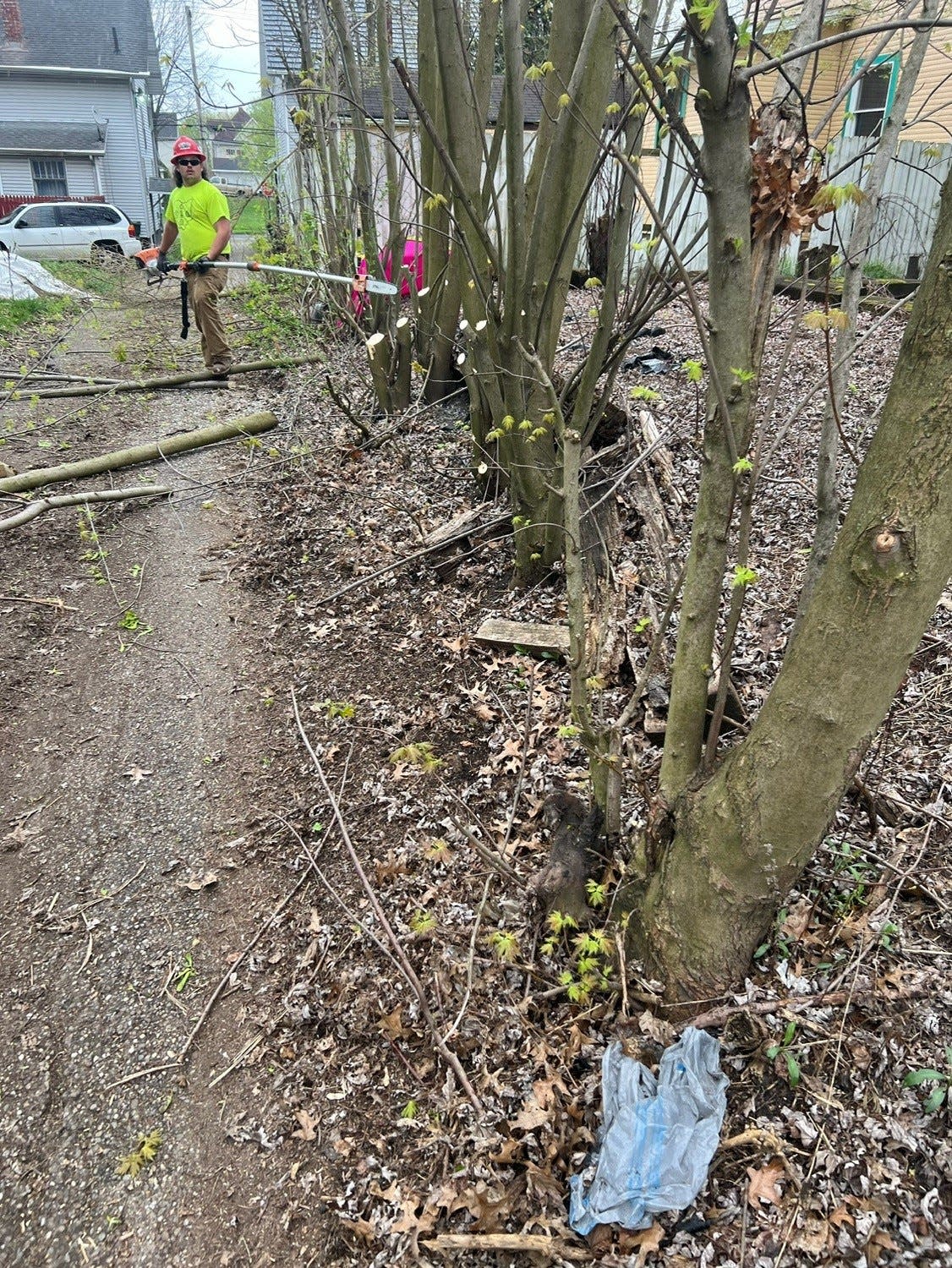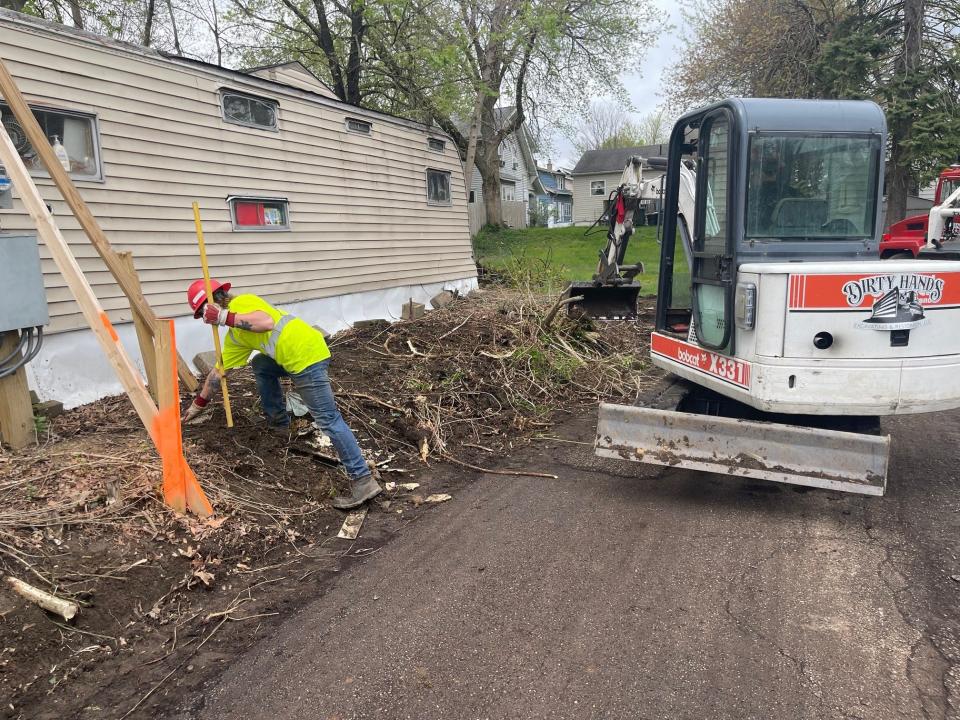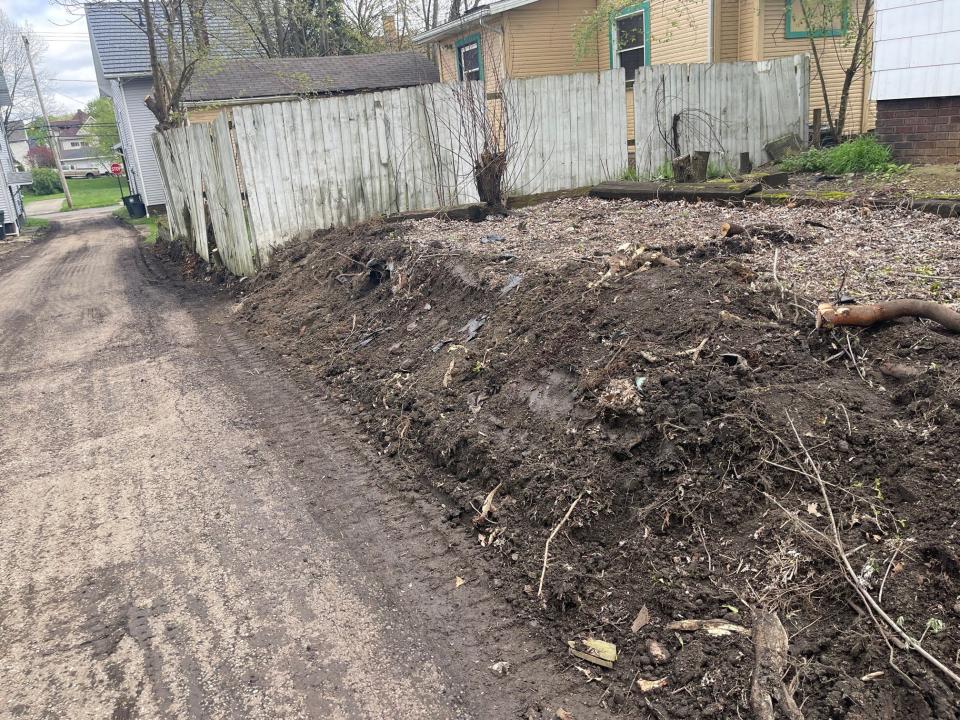'This is a direction we haven’t gone before.' Canton mayor to present neighborhood plan

CANTON − The city’s focus for the past several years primarily involved building up its core assets, such as downtown, around the Pro Football Hall Fame and major corridors.
City leaders, under the direction of Mayor William V. Sherer II, are now pivoting their focus to the neighborhoods.
Sherer, who campaigned heavily on neighborhood investment and safety as part of his bid last year for mayor, has been working with members of his administration, council and the city's police and fire chiefs over the past four months to create a neighborhood transformation initiative, titled Connecting Canton – Together.
The mayor’s initiative uses dozens of data points to illustrate the existing conditions of city neighborhoods, divides the city into four planning quadrants and identifies 16 priority improvement areas.
Details about which projects will be tackled in the priority areas will be decided by the people living in those neighborhoods, he said.
“This is a direction we haven’t gone before,” Sherer said. “This is going to take some time. But right now we’re just building the engine.”
Planning Director Donn Angus will present the initiative on Monday during City Council’s committee meetings, which begin at 6:15 p.m. at City Hall at 218 Cleveland Ave SW. The meeting is open to the public.
A copy of Angus’ presentation will be available after the meeting on the City Planning Department’s website at www.cantonohio.gov/157/Planning-Zoning.
Here are five things to know about the initiative:
1. City officials, data points, and previous plans serve as backbone
Much of the planning document for the mayor’s initiative evaluates the current conditions of city neighborhoods. Using geographic mapping, the planning department analyzed population density, business incentive zones, the location of publicly owned land, schools, places of worship, community centers and grocery stores, sidewalk conditions, upcoming infrastructure projects and existing transportation options.
Angus said the mapping helped to identify deficiencies, opportunities and constraints.
“We’re building up a crescendo for a starting point of where we can attack first,” Angus said.
Planning leaders also referred to the strategies provided in the city’s 2016 Comprehensive Plan, which focused on six core areas for investment, and the 2021 Canton Neighborhood Development Master Plan, which focused on the Shorb neighborhood.
Angus said the mayor’s initiative is different from the Comprehensive Plan that laid out goals for a 10-year span.
“This is a short-term action plan that will continue to be updated,” he said.
Angus plans to return to council later this year to ask council members to amend the Comprehensive Plan to include an initiative’s expanded view of neighborhood investment. By including the additional information, the city can seek federal funds for a wider range of projects.
2. Sixteen priority improvement areas have been identified
The initiative breaks down the city into four planning quadrants — East, Southwest, Central and Northwest. Each quadrant will be studied and have its own plan of action.
City officials then identified four priority areas within each of the four quadrants.
The priority improvement areas include (in alphabetical order):
Allen Avenue SE area
Aultman Hospital neighborhood area
Crenshaw Middle School and Youtz School area
Crystal Park area
44th Street NW corridor
Greater Shorb neighborhood area
Hall of Fame Fitness development area and the intersection of Fulton Road, 25th Street NW and Harrison Avenue NW
Harter Elementary and Harter Heights neighborhood area
Hartford school and Tuscarawas Street E area
J. Babe Stearn Community Center area
Monument area neighborhood
Southeast Community Center and Sherrick Road corridor area
Vassar Park neighborhood area
Walnut/Cherry revitalization area
Weis Park area
West Park neighborhood area
The Southeast Community Center and Sherrick Road corridor area, and the Vassar Park neighborhood area have been selected as the city’s priorities for 2025.
Angus said the city has partnered with area economic development and community groups to study the southeast area as part of an application for the federal Distressed Area Recompete Pilot Program grant, which could lead to a $20 million investment to help southeast residents return to the workforce.
He said additional city projects would supplement that potential federal money and the other privately funded improvements that have been made recently in the area, such as the recently opened Southeast Market and Health Center on Gonder Avenue SE.
Angus said the Vassar Park neighborhood, located north of 12th Street and west of Market Avenue N, was selected as a priority because it touches multiple city wards and because the neighborhood is at a tipping point where it needs some investment to remain stable and not succumb to blight.
3. Some of the initiative’s recommended actions already underway

The initiative outlines 13 categories where city leaders have identified voids that need to be addressed and lists 79 potential action steps. The categories range from communication, to road improvements and transportation, to diverse housing options, technology and safety.
Sherer already is moving forward with some of the suggested action steps.
In April, he hired Christian Turner as the city’s communications director. Turner, a 13-year U.S. Army veteran who most recently served as the public relations director for the Stark County prosecutor and previously worked as Canton Park and Recreation’s marketing and special events coordinator, has been tasked with providing additional information about the city services and programs that are available to residents.
The city also has hired a contractor to begin removing brush and debris from the alleys throughout the city to get them ready for paving. Sherer has pledged to pave every city alley within four years.
“There are alleys that haven’t been paved in 60-plus years,” Sherer said. “How many people have been living on an alley and have been forgotten about?”

Sherer also has asked City Council to add $500,000 to the city's existing $750,000 demolition budget to tackle deteriorated homes. Sherer believes the city could demolish nearly 40 more structures with the additional funds.
Other suggested action steps that have not been started include expanding the Mayor’s Neighborhood Commission, developing a junk vehicle parking solution, placing speed monitoring devices and tables at problem locations, preparing a housing stabilization plan and creating a strategy for city-owned vacant properties.
4. Mayor plans to hold town halls
A major theme throughout the initiative’s planning document is to include residents in prioritizing the projects they need to improve their neighborhoods and communicating with residents to empower them to take a greater role in revitalization and development activities.
After Monday’s meeting with council, city leaders plan to schedule town hall meetings with the residents in the two prioritized improvement areas. No dates had been set as of Thursday.
Sherer said each neighborhood is so unique that the improvement plans must be tailored with resident input.
The meetings will seek to evaluate the issues facing the neighborhood, build a consensus on the neighborhood’s needs and priorities, identify actions and projects, attract potential resources and form relationships with development partners to move forward with the projects.
5. Reaction so far has been mostly positive
Council Majority Leader John Mariol II supports the mayor’s initiative.
“The public is going to love this,” he said, “and I think it’s going to be transformational for the city.”
Hector McDaniel, president of the Stark NAACP, said it’s important that the redevelopment focuses on residents.
“Redevelopment is not about projects or programs, it’s about people,” said McDaniel, who attended a preview of the presentation last month with other community, church and neighborhood association leaders. “And they are a central core tenant of why we are here.”
He also supported the city's selection of the southeast area as a priority area, noting that the NAACP is one of the agencies working on the federal Recompete grant.
Both McDaniel and Brice Bender, a member of the mayor's Neighborhood Commission, expressed concern about what could happen to the improvements once they are completed and the city moves onto another neighborhood.
“How do you create personal value? You can put me in a million-dollar home, but if I don’t have some sort of personal value of myself, that home will be destroyed quite quickly,” McDaniel said.
Bender, who also attended last month's presentation preview, asked how the city could hold residents accountable.
“You can make all the changes in the neighborhood, and then the neighborhood can turn around and destroy it,” he said.
Angus said he believes having the neighborhood involved in the decision-making and prioritizing of projects will help create civic pride and reduce the likelihood that the improvements would be destroyed.
Reach Canton Repository staff writer Kelli Weir at 330-580-8339 or kelli.weir@cantonrep.com.
This article originally appeared on The Repository: Canton mayor's neighborhood transformation plan to be presented

